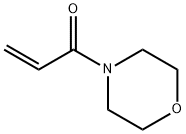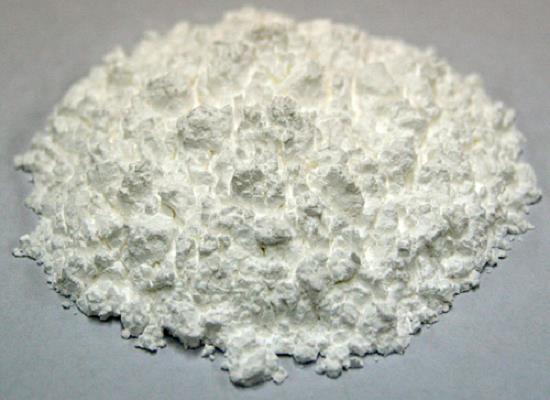4-Acryloylmorpholine: Enhancer of Adhesion in Smartwatch and Catalyst in Ionic Liquids
General Description
4-Acryloylmorpholine is a critical compound in adhesive formulations, particularly for UV-curable adhesives used in products like smartwatch protectors. While it enhances adhesion and durability, it is also a significant allergen, posing health risks such as allergic contact dermatitis. Reports of adverse reactions underscore the need for careful consumer protection measures, including alternative formulations and improved labeling. Additionally, poly(4-acryloylmorpholine), derived from this compound, significantly boosts the activity of lipase A from *Bacillus subtilis* in ionic liquids, highlighting its versatility in enhancing biocatalysis while addressing enzyme compatibility issues in these environments.

Figure 1. 4-Acryloylmorpholine
Benefits and Risks in Adhesives
Introduction to 4-Acryloylmorpholine
4-Acryloylmorpholine is a chemical compound that has recently gained considerable interest due to its applications in various products, particularly in adhesives. This compound plays a critical role in the formulation of UV-curable adhesives, which are widely used in the manufacturing of personal care items, including those that attach protective cases to smartwatches. However, it is important to note that 4-Acryloylmorpholine is identified as a significant allergen, capable of triggering allergic reactions in some individuals. Awareness surrounding 4-Acryloylmorpholine is essential, especially in consumer products like smartwatch screen protectors, where prolonged skin contact can lead to adverse health outcomes.
Application in Adhesives
In the context of adhesive formulations, 4-Acryloylmorpholine is indispensable due to its properties that enhance adhesion and durability. This compound is integral to the development of strong bonding materials that securely attach protective cases to smartwatches, ensuring both functionality and aesthetics. However, despite its advantages, concerns surrounding the safety of products containing 4-Acryloylmorpholine have emerged. Recent studies have revealed instances of allergic contact dermatitis linked to the presence of this compound in adhesives. These findings illustrate that while 4-Acryloylmorpholine contributes to effective adhesion, it poses a risk to individuals who are sensitive to it, thereby necessitating a careful approach in its utilization.
Health Implications
The detection of 4-Acryloylmorpholine in adhesives associated with smartwatch protectors raises significant health concerns. Reports have documented cases where consumers have experienced allergic contact dermatitis, presenting symptoms such as vesicular inflammatory plaques. A notable case series featuring three women who developed dermatitis after using smartwatches with cases bonded by adhesives containing 4-Acryloylmorpholine emphasizes the urgency of addressing these risks. To protect consumers while still harnessing the benefits of 4-Acryloylmorpholine in adhesive applications, it is crucial to explore alternative formulations or enhance labeling practices to inform users. Such measures can help mitigate allergic reactions and improve overall product safety, ensuring that the advantages of 4-Acryloylmorpholine do not come at the expense of consumer health. 1
Role of its Polymers in Ionic Liquids
Tuning the molecular interaction between enzymes and their solvent environment through polymer modification can greatly improve activity and thus utility in biocatalytic reactions. In this work, this approach was exploited to enhance the activity of lipase A (LipA) from Bacillus subtilis in anhydrous ionic liquids (ILs), which are highly attractive solvents for biocatalysis. Specifically, we showed that the transesterification activity of LipA in anhydrous 1-butyl-3-methyl imidazolium hexafluorophosphate ([BMIM][PF6]) was improved up to 19-fold via covalently conjugating the enzyme with the IL-soluble polymer poly(4-acryloylmorpholine) (PAcMO). The increase in transesterification activity correlated with an increase in LipA solubility in [BMIM][PF6] as well as, notably, the number of conjugated PAcMO repeat units.
Light scattering results further showed that the attachment of PAcMO disrupted the aggregation of LipA in aqueous buffer, which was used as a proxy to understand the mechanism of activation of LipA in the IL, where aggregation was more pronounced. Additionally, using static light scattering, the Flory–Huggins interaction parameter (χ) for the polymer–IL interactions was determined (0.457). The favorable PAcMO–IL interactions presumably compensated for the unfavorable interactions between the enzyme and IL, which resulted in the improvement in dissolution and, in turn, activity due to reduced diffusional limitations. Through rationally considering χ, a similar approach may be used to tune the molecular interaction between other enzymes and ILs with other polymers, which has widespread implications for the enhancement of biocatalysis in ILs.2
References:
[1] M. GATICA-ORTEGA. Nonoccupational Allergic Contact Dermatitis to 4-Acryloylmorpholine in Smartwatch Screen Protectors Glue[J]. Dermatitis, 2022, 33 1: 429-434. DOI:10.1097/DER.0000000000000888.[2] GARRETT R. CHADO . Modification of Lipase with Poly(4-acryloylmorpholine) Enhances Solubility and Transesterification Activity in Anhydrous Ionic Liquids[J]. Biomacromolecules, 2018, 19 4: 1091-1373. DOI:10.1021/acs.biomac.8b00176.
You may like
Related articles And Qustion
Lastest Price from 4-Acryloylmorpholine manufacturers

US $2.20-8.80/KG2025-07-08
- CAS:
- 5117-12-4
- Min. Order:
- 1KG
- Purity:
- 99%
- Supply Ability:
- g-kg-tons

US $1.00/kg2025-04-21
- CAS:
- 5117-12-4
- Min. Order:
- 1kg
- Purity:
- 99%
- Supply Ability:
- 10mt



